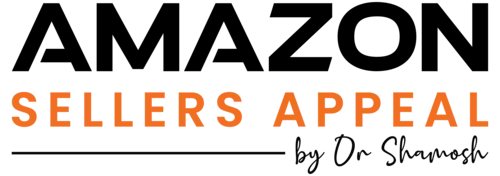Amazon’s New Compliance Crackdown: What Branded Resellers Need to Know
Amazon’s New Compliance Crackdown: What Branded Resellers Need to Know
Effective June 30, 2025, Amazon’s “Stolen Goods” policy goes live. On paper, it targets counterfeiters. In practice, it’s putting legitimate branded resellers at serious risk – and confusing many private label sellers in the process.
Over the past few days, sellers across different business models – particularly branded resellers and even some private label (PL) brands – have received unexpected compliance notifications. These messages reference new documentation requirements, threaten listing removals, and even block sellers from relisting without proof of origin. But if you’re a private label seller and this policy doesn’t apply to you, the best move may be to do absolutely nothing – unless your brand is misclassified or caught in Amazon’s enforcement net.
What’s Actually Changing?
This new policy stems from increasing pressure on Amazon to combat counterfeit and stolen goods. Laws like the INFORM Consumers Act require Amazon to take a more aggressive stance on verifying seller legitimacy, but the way the policy is written and enforced introduces widespread collateral damage.
Amazon now expects all sellers of branded products (i.e., not private label) to provide:
-
Invoices or receipts showing purchase source and quantity
-
Supplier and manufacturer contact information
-
Documentation aligned with your sales volume
-
A complete chain of custody back to the original manufacturer – even if you bought from a distributor
Importantly, Amazon reserves the right to contact your suppliers directly. If the supplier is unreachable, slow to respond, or declines to verify your claims, you may lose the listing.
The Limits of the First Sale Doctrine
Many sellers cite the First Sale Doctrine when challenged: legally, once you buy a genuine product, you can resell it.
That’s true under U.S. trademark law. But Amazon isn’t a court. It’s a private company. It doesn’t have to honor the doctrine.
In fact, Amazon has a long history of tightening enforcement around certain brands – Nike, Apple, Chanel – regardless of whether the resellers were legally in the right. With Nike, for example, thousands of resellers were shut out overnight as Amazon implemented a hard gating policy that required direct authorization.
Why Branded Resellers Are Most at Risk
Amazon isn’t chasing criminals – it’s eliminating perceived risk.
If you:
-
Source from liquidators or shelf-pull vendors
-
Buy from wholesalers without brand authorization
-
Don’t have documentation from a verifiable supply chain
-
Sell inventory that has changed hands multiple times
…then you may get flagged. Even if your products are 100% real.
Amazon doesn’t just want authenticity – they want traceability. And they want it in their format. No exceptions, no nuance, no appeals unless you can show exactly what they ask for.
This puts wholesale and arbitrage models in a tough spot – especially when dealing with intermediaries who can’t or won’t verify.
What’s Scaring Private Label Sellers (And Why You Might Do Nothing)
A growing number of private label sellers have reported receiving warnings tied to the new policy. In most cases, this appears to be a false positive:
-
The alerts may be generated by automated systems misidentifying brands
-
Product listings might be associated with outdated or inaccurate brand metadata
-
In some cases, older listings were never properly registered as private label
If this is you, here’s the key advice: don’t panic.
Unless the ASIN flagged references a well-known brand name that’s not yours, you likely don’t need to respond. Reacting hastily or uploading irrelevant documentation can confuse Amazon’s system further or escalate your case needlessly.
Instead:
-
Double-check the brand name and ASIN Amazon referenced
-
If it’s not your product or not a branded item, ignore it
-
If it’s incorrectly flagged, calmly open a case and explain the listing is private label, with supporting screenshots if needed
This mirrors other chaotic rollouts like the pesticide purge or hazmat misclassifications. Amazon over-enforces, collects signals, then eventually fine-tunes. You just need to survive the storm.
What Branded Sellers Should Do Now
If you are selling branded products that you didn’t manufacture yourself, then you need to act now:
1. Gather invoices and sort them by ASIN. Highlight the relevant SKUs and verify date, quantity, and item match.
2. Confirm your supplier can verify purchases. Call or email them now. Ask if they’ll speak to Amazon if contacted.
3. Trace upstream. If your supplier sourced from another distributor, try to obtain those documents too.
4. Avoid over-redacting invoices. You can mask pricing, but make sure line items, contact details, and brand info are visible.
5. Clean up your listing data. Double-check your brand attribute fields. If you list as private label, make sure it’s recorded as such.
Amazon’s Policy, Amazon’s Enforcement
Amazon isn’t using legal doctrine to manage this crackdown. They’re using automated enforcement tied to vague risk signals, seller metadata, and responsiveness. It doesn’t have to be fair. It just has to meet their internal definition of “safe.”
That means you need:
-
Amazon-compliant documentation
-
Cooperative suppliers
-
Quick response times
And if you’re a private label seller, the best thing to do right now might be absolutely nothing at all – unless you’re incorrectly flagged.
Don’t assume every policy email requires a reaction. The real risk isn’t ignoring a false alarm – it’s overreacting to one.
